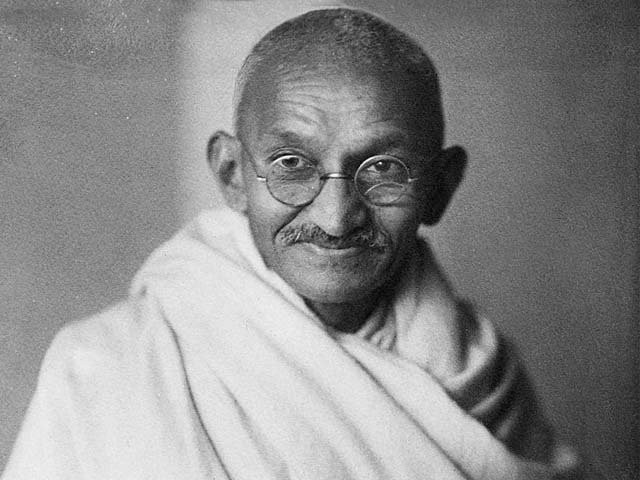George Floyd’s murder in the United States (US) at the hands of the police has resulted in huge protests in the country calling for racial justice which soon spread to other countries. This was followed by the downing of a slave trader’s statue in Bristol, England and the defacement of Winston Churchill’s statue amidst calls for it to be brought down. Gandhi, the revered champion of non-violent resistance, also had calls for his statue to be removed in Leicester, England and one statue was defaced in Washington, US.
Academics and activists subscribing to Gandhian philosophy have defended him of charges of both racism and bigotry for quite some time. Some stay reticent on the matter owing to Martin Luther King Jr’s reverence of Gandhi, whereby his critics bring Gandhi’s controversial views to malign the late reformer’s crusade against racial discrimination. Gandhi’s critics seek to emphasise said views to bring justice to those they perceived had suffered at the hands of his words and actions.
Two groups are relevant in this regard: Blacks, whom Gandhi encountered in South Africa, and Dalits or Untouchables, whom he interacted with primarily in India. One glaring gap in almost every analysis is to consider Gandhi’s views and actions regarding the two groups separately. Rather, a better approach is to view them chronologically so as to understand the context of the socio-political climate of the time.
Gandhi’s views regarding blacks in South Africa are indefensible. He called them “savage”, “raw” and kept his struggle for the rights of Indian people “separate from that of Africans and coloureds even though the latter were also denied political rights on the basis of colour and could also lay claim to being British subjects” [1]. This is accepted by his grandson Rajmohan Gandhi who is also an academic and has stated Gandhi was an “imperfect human being” who was “prejudiced” and “ignorant” of blacks. But it is more than just some racist opinions [2]. Gandhi also wrote in 1893 to the Natal parliament in South Africa that “general belief seems to prevail in the Colony that the Indians are a little better, if at all, than savages or the Natives of Africa”. In 1904 he asked the administration for resettlement of the blacks away from Indians. Afterwards, he led satyagarhas (non-violent resistance) against the same government in 1906 and 1908, and in 1913 led a march against discriminatory treatment meted out to Indians only [3]. This clearly shows that his policy with regards to blacks was to show the Indian as better deserving of the White Man’s favours. Whether the whites gave those favours unwillingly or through a satyagarha, was another matter.
It was this tribal mindset that Gandhi brought to the subcontinent when he arrived in 1915. He rose up the ranks of Congress with alarming speed and came to dominate Indian politics with his part in the Khilafat Movement a few years later. The political climate in those days was that the British were questioning Congress claims to represent all Indians [4]. They pointed not just to the Muslims but also the Untouchables among the Hindus known as Dalits who had begun their separate political agitation for the attainment of equal rights with Hindus [5]. The Dalits had been persecuted for centuries because they happened to fall outside of the four Hindu castes, known in a combined form as chaturvarna. Hence, these out-castes were Untouchables. Orthodox Hindus believed that the four varnas (or castes) were hereditary occupations, assigned at birth and immutable. Dalits mostly were employed in the low-paying labour force whereas the caste Hindus occupied various places in the economic pyramid, most importantly at the top [6].
Gandhi, who himself was a vaishya (trader caste) [7] gave very extreme statements on this topic. In 1921 he addressed a Dalit conference and stated that, “Yudhishthira would not enter heaven without his dog. How can then, the descendants of that Yudhishthira, expect to obtain Swaraj without the Untouchables?” [4].His apologists are keen to highlight an evolution in his views about caste which changed, we are told, when he discussed the issue with the Dalit leader Dr B R Ambedkar sometimes in the late 1920s [5]. However, this doesn’t seem to be the case as Gandhi since childhood had treated the Untouchables very well in his personal capacity [1]. In 1915 he adopted a Dalit girl as his daughter [8] and in 1917 he was part of the Congress resolution to abolish Untouchability [9]. He criticised chaturvarna all through the 1920s [8]. As stated earlier, his “pro-Dalit” views were due to the political situation of the time. This was exposed spectacularly when the British government gave rights of separate electorates to Dalits in the 1932 Communal Award. Gandhi immediately went on a fast unto death in his prison cell. Separate electorates meant Hindu vote would be divided forever. Seven days later amidst national outcry, Dr Ambedkar capitulated, signing the Poona Pact and letting go of this gift from the British [5][10].
A bitter Ambedkar remarked: “Why didn’t Gandhi hold a fast unto death to abolish untouchability?” [10] Gandhi in fact did hold two fasts to abolish untouchability after the Poona Pact but they were for a limited time only [11], earning him violent opprobrium from the Hindu far-right [12]. He gave the Dalits a new name, Harijan, or children of god, but this was rejected by the Dalits who preferred to call themselves Adi Hindus to seek equality with the caste Hindus [13]. Dalit writers such as Kusuma Dharmanna, B N Murty, and Kalekuri Prasad have exposed how even Gandhians did not change their behavior towards Dalits and how his Harijan Sevak Sangh aimed at creating pro-Congress Dalits with the formula of being content with varna in this life to be reincarnated into a ‘better’ caste in the next life [14]. No structural changes occurred for Dalits even though 1946 onward Gandhi only attended inter-caste weddings of Dalits and caste Hindus [15] and resorted to theatrics such as declaring himself a Harijan, wanting rule of “bhangis” and a Dalit girl as prime minister [16]. His apologists believe this finishes the conversation and Ambedkar erred in choosing to focus on his “earlier” statements. They forget that Ambedkar is not a contemporary scholar but a Dalit leader who lived in those times. In his own words, “Mr Gandhi has never used satyagarha against Hindus to get them to throw open wells and temples to the untouchables.” [4]
His aim in South Africa was betterment of the conditions of Indians, for which blacks could be sacrificed while ‘his people’ became junior partners to whites. His aim in India was Swaraj (self-rule) for which Dalits (and Muslims) had to be forced into one nation (ignoring the structural persecution of the caste Hindu majority) to ‘answer’ the British. The former is racism, the latter is political opportunism.
Rajmohan Gandhi is right. His grandfather was an imperfect individual. He may be hated by the Hindutva too and some may think his ideal is a bulwark against them. One can even understand Gandhi’s philosophy of gradual reform of Hindu society to eradicate untouchability, but his fast unto death in 1932 was downright criminal. The Dalits were robbed of their rights through blackmail and doomed to further persecution. It were the caste Hindus who should have changed their behaviour to win them back. Hence, Arundhati Roy is also right when she says that Gandhi’s name should be removed from all public places. Justice for Dalits cannot happen until history is set straight. It is the only way that atonement towards those he wronged can begin in India and South Africa.
References
[1] Ashwin Desai and Goolam Vahed, “South African Gandhi”
[2] https://indianexpress.com/article/research/was-mahatma-gandhi-racist/
[3] M. Muslim Khan, “India – South Africa Unique Relations”, The Indian Journal of Political Science Vol. 71, No. 2 (Aprl - Jun, 2010), p. 615.
[4] Swathy Margaret, “Cultural Gandhism: Casting Out the Dalit Woman”, Economic and Political Weekly, Vol. 48, No. 18 (May 4, 2013), p. 87.
[5] Baren Ray, “Gandhi Against Untouchability”, World Affairs: The Journal of International Issues, Vol. 4, No. 2 (Dec 1995), p. 29.
[6] Ajay Gudavarthy, “Gandhi, Dalits and Feminists: Recovering the Convergence”, Economic and Political Weekly, Vol. 43, No. 22 (May 31 - Jun. 6, 2008), p. 85.
[7] Sujay Biswas, “Gandhi’s Approach to Caste and Untouchability: A Reappraisal”, Social Scientist, Vol. 46, No. 9–10 (544–545) (September–October 2018), p. 75.
[8] Ibid., p. 72.
[9] Parimala V. Rao, “Gandhi, Untouchability and the Postcolonial Predicament: A Note”, Social Scientist, Vol. 37, No. 1/2 (Jan. - Feb., 2009), pp. 65.
[10] N.S. Gehlot, “Dr. Ambedkar, Mahatma Gandhi And Dalit Movement”, The Indian Journal of Political Science, Vol. 54, No. 3/4 (July - Dec. 1993), p. 384.
[11] Baren Ray, “Gandhi Against Untouchability”, World Affairs: The Journal of International Issues, Vol. 4, No. 2 (Dec 1995), p. 36.
[12] Anil Nauriya, “Gandhi's Little-Known Critique of Varna”, Economic and Political Weekly, Vol. 41, No. 19 (May 13-19, 2006), p. 1836.
[13] Swathy Margaret, “Cultural Gandhism: Casting Out the Dalit Woman”, Economic and Political Weekly, Vol. 48, No. 18 (May 4, 2013), p. 84.
[14] Ibid., p. 85.
[15] Ibid., p. 90.
[16] Anil Nauriya, “Gandhi's Little-Known Critique of Varna”, Economic and Political Weekly, Vol. 41, No. 19 (May 13-19, 2006), p. 1837.



COMMENTS
Comments are moderated and generally will be posted if they are on-topic and not abusive.
For more information, please see our Comments FAQ